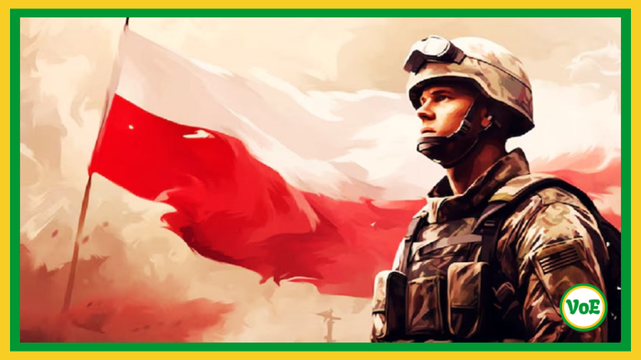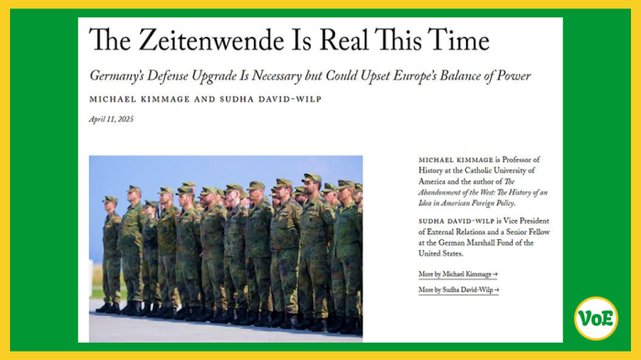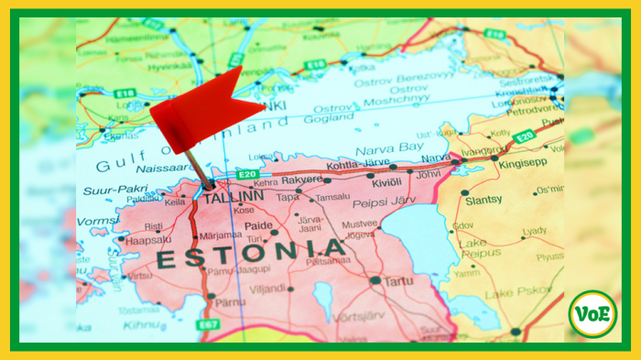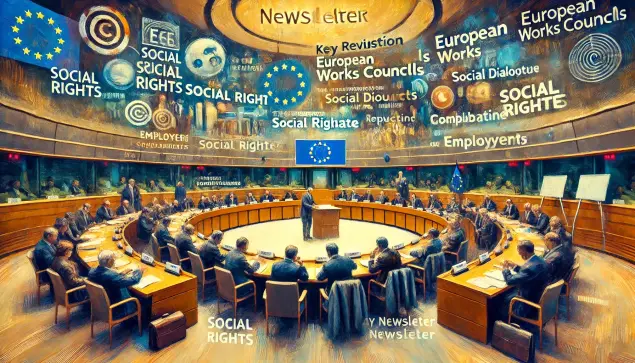#cee
🚨 New report drop: Who is protecting Europe’s future? 🛡️
The Recursive’s 2025 state of defense and cybersecurity tech in CEE is here - and it’s essential reading. 👇 Here's why:
From cyber warfare to battlefield AI, this 120-page deep dive maps the defense and #cybersecurity ecosystems across 19 Central and Eastern European countries - spotlighting over hundreds of startups and the specialists on their teams.
As one of the strategic sponsors of this report, we’re proud to see how the regional community is maturing and stepping up not just in #infosec innovation but in resilience, readiness, and real-world impact.
📍 Highlights:
🇺🇦 Ukraine: over 80% of tech used by the military now originates from Ukrainian startups, many accelerated through the Brave1 platform.
🇷🇴 Romania & 🇵🇱 Poland: top talent hubs with 50+ cybersecurity university programs
🇪🇺 CEE: emerging as a serious security provider, not just a consumer
💡 Exclusive insights into the Cyber Resilience Act and its implications
🧠 If you’re in cyber, defense, or policy - this is your map to what’s next.
👉 Download the full report (and find us at page 89): https://report.therecursive.com/
📖 Featuring insights from our team at Pentest-Tools.com, Bronia AI , Plainsea, and more.
Descubre Cee: el museo al aire libre que te espera en A Costa da Morte https://www.vinetur.com/2025051987720/descubre-cee-el-museo-al-aire-libre-que-te-espera-en-a-costa-da-morte.html?utm_source=dlvr.it&utm_medium=mastodon #Cee #CostaDaMorte #MuseoAlAireLibre #PatrimonioCultural #CaminoDeSantiago
Poland’s Military-Industrial Complex Is Embarrassingly Underdeveloped
Poland’s Military-Industrial Complex Is Embarrassingly Underdeveloped
Its ruling duopoly neglected this for years in favour of buying mostly American equipment, which created a dependence that’s now practically impossible to eliminate and might thus forever end its Great Power aspirations.
Poland’s aspiration to restore its long-lost Great Power status makes sense given that it’s the EU’s most populous eastern state, it has the largest economy among that group, and it now commands NATO’s third-largest army, but the last point isn’t what it seems. A recent article from Bloomberg revealed how embarrassingly underdeveloped Poland’s military-industrial complex (MIC) is despite the country doubling its defence budget. The present piece will review their article and then analyse its findings.
To begin with, Poland’s MIC is dominated by an over-50-company state-owned conglomerate known as Polska Grupa Zbrojeniowa (PGZ, Polish Armaments Group), which was founded in 2013. For as large as PGZ is, it’s struggled for over a decade to expand production of propellants in a saga that was detailed by Bloomberg. In short, two separate plans for opening facilities of this sort – dubbed Project 44.7 and Project 400 – have yet to enter into operation, thus hamstringing Poland’s domestic shell production.
About that, the country plans to produce just 150,000 shells by the end of this year, while neighbouring Germany’s Rheinmetall plans to produce five times as many at 750,000 after expanding production tenfold since 2022. To add insult to injury, “Ukrainian artillery fires 5,000 or more 155-millimeter rounds every day for an annual total of around 2 million shells” according to Forbes in February, so PGZ can only produce in one year what Ukraine fires against Russia in just one month.
Production of Piorun, the portable air-defense missile launcher that Defence Minister Wladyslaw Kosiniak-Kamysz described as Poland’s flagship product, is equally dismal. It’s been produced for nearly a decade already since 2016 but there’s still only a single production line. Kosiniak-Kamysz announced in early April that another production line is planned, but the previously mentioned precedent of Poland’s failed attempt to expand production of propellants over the past decade doesn’t inspire optimism.
Instead of prioritizing the domestic production of propellants, shells, air-defense missiles, and other equipment that Poland would need in the far-fetched scenario of defending against a Russian invasion, the majority of Poland’s defence expenditures have been spent on buying foreign equipment. Although Bloomberg noted how Poland wants to partially assemble some of the tanks that it plans to purchase from South Korea, these efforts “have foundered” due to stalled talks over the terms.
In any case, the partial assembling of mostly foreign-produced military equipment isn’t a solution to the problems that plague Poland’s MIC, which are clearly systemic by this point but owe their origins to its ruling duopoly preferring to purchase mostly American equipment as a means of cosying up to the US. Regardless of whether the liberal “Civic Platform” is in power or the comparatively (but very imperfectly) conservative “Law & Justice”, each has sought to make Poland the US’ top partner in Europe.
The rationale was that this would ensure that the US abides by its Article 5 mutual defence commitments to Poland in the extremely unlikely event of a Russian invasion, yet the opportunity cost of this political ploy was that the country’s MIC is embarrassingly underdeveloped. That wasn’t a problem for most Poles so long as Russia and the US remained at odds but is nowadays filling many of them with dread amidst the nascent Russian–US “New Détente” that Putin and Trump jointly envisage.
It’s unimportant that Russia has no plans to invade Poland and that the US wouldn’t realistically stand aside in the political fantasy of that happening since Poles as a whole have an almost pathological fear of Russia for historical reasons. In the minds of many, Russia could invade them all of a sudden on any given day, and the odds of this occurring would spike if the US gradually disengages from Europe and explicitly distances itself from providing for its continued security.
As it turns out, that’s precisely what the Trump Administration plans to do, though it’s unlikely to pull all US troops out of Central & Eastern Europe (CEE) as it redeploys some to Asia for more muscularly containing China or abandon its Article 5 commitments. Even so, Secretary of State Pete Hegseth just declared that the US will no longer be the sole guarantor of European security as he urged NATO members to shoulder more such responsibilities, which must have sent chills down most Poles’ spines.
Over half of them already consider the US to be an unreliable guarantor of Poland’s security per polling from a Polish newspaper of record in early March so even more might soon share this sentiment after what Hegseth just said. Later that same month, the chief of Poland’s National Security Bureau shockingly revealed that their country only has less than two weeks’ worth of ammo, which means that it would be completely dependent on the US’ commitment to Article 5 to survive as a state if Russia ever invaded.
Once again, Russia has no plans to do so and the US wouldn’t hang Poland out to dry if that happened, but the nascent Russian-US “New Détente”, Hegseth’s latest policy declaration, and Poland’s embarrassingly underdeveloped MIC have combined to maximally exacerbate Poles’ threat perception. Their country is unprecedentedly vulnerable because never had it been so dependent on foreign military equipment or security guarantees nor had its MIC ever been so unprepared to fight a war with Russia.
The silver lining from their perspective is that the authorities are finally serious about rectifying the MIC problems that form the core of this newly exacerbated paranoia about a future Russian invasion as evidenced by early April’s draft defence bill for fast-tracking defence projects. Nevertheless, it might still be too little, too late, plus Poland plans to sign a nearly $2 billion Patriot missile deal with the US sometime soon that’ll reinforce its dependence on the US’ MIC, including for maintenance and spares.
Considering all that was shared about Poland’s MIC, both facts and analysis thereof, its Great Power aspirations are therefore unrealistic since it’ll never be able to exert independent military influence anywhere in the broader region. Despite its boasts of commanding what’s now NATO’s third-largest army, it already emptied its entire stockpile after donating everything to Ukraine, and it sorely lacks the domestic military production capabilities for fighting a hypothetically protracted conflict with Russia.
These aren’t the characteristics of a Great Power but of a paper tiger, which is a harsh but accurate description of the Polish military, whose woes and the associated anxiety that society’s wider awareness of this creates are entirely the fault of its short-sighted ruling duopoly. They neglected their country’s MIC for years in favour of buying mostly American equipment, which created a dependence that’s now practically impossible to eliminate and might thus forever end Poland’s Great Power aspirations.
Disclaimer: The views expressed in this article are author’s own and do not necessarily reflect the editorial policy of Voice of East.
7 Courses in 1 – Diploma in Business Management
#CEE #CentralAndEasternEurope #EU #Geopolitics #Germany #NATO #Poland #Russia #USA
Una Virgen, dos héroes y siglos de historia: así se forjó la identidad de Cee https://www.vinetur.com/2025051287486/una-virgen-dos-heroes-y-siglos-de-historia-asi-se-forjo-la-identidad-de-cee.html?utm_source=dlvr.it&utm_medium=mastodon #Cee #VirgenDeXunqueira #HistoriaGallega #PatrimonioCultural #HéroesDeCee
Bulgaria's tech scene is evolving fast from outsourcing to deep tech. Low taxes, skilled talent, growing VCs & the #BreakingGrounds initiative are driving its rise as a European hub. Watch out for more unicorns like Payhawk. #BulgariaTech #EmergingTech #CEE
Evaluating Foreign Affairs’ Warning About The Risks Of An Emboldened And Remilitarized Germany
Evaluating Foreign Affairs’ Warning About The Risks Of An Emboldened And Remilitarized Germany
How likely is it that a potentially ultra-nationalist Germany “relitigates its borders or forgoes EU-style deliberation in favour of military blackmail”?
Foreign Affairs warned earlier this month that an emboldened and remilitarized Germany could pose another challenge to European stability. They’re convinced that former Chancellor Olaf Scholz’s “Zeitenwende”, or historic turning point, “is real this time” in the sense that his successor Friedrich Merz now has the parliamentary and popular support to transform their country into a Great Power. While this would allegedly benefit Europe and Ukraine, it wouldn’t be without three serious risks.
According to the article’s two authors, these entail: Russia waging more hybrid war on Germany; Germany’s rise possibly provoking more nationalism in surrounding countries; and this potentially leading to an explosion of ultra-nationalism in Germany. The catalyst for all of this is the US’ gradual disengagement from NATO brought about by the Trump Administration’s reprioritization of the Asia-Pacific. As American influence recedes, it’ll create political and security voids that others compete to fill.
To be sure, the article itself is more about promoting the alleged advantages of Germany’s delayed implementation of Scholz’s “Zeitenwende”, which the authors praise as long-overdue and a natural response to the aforesaid catalyst seeing as how Germany is already the EU’s de facto leader. At the same time, touching upon the risks bolsters their credibility in some readers’ eyes, enables them to subtly throw shade on Trump, and presents the authors as prescient in case any of the above occurs.
Beginning with the first of the three, it’s predicable that Germany and Russia would carry out more intelligence operations against one another if the first plays the continent’s leading role in containing the second, which the latter would of course consider to be a latent threat for obvious historical reasons. The article omits any mention of the way in which his newfound German role would harm Russian interests and misportrays whatever Moscow’s response may be as unprovoked aggression.
They’re fairer with regard to the second risk of surrounding countries becoming more nationalistic as a reaction to an emboldened and remilitarized Germany but don’t elaborate. Poland is probably the most likely candidate though since such sentiments are already rising in society. This is a reaction to the ruling liberal-globalist coalition in general, its perceived subservience to Germany, and concerns that a possibly AfD-led Germany might try to reclaim what Poland considers to be its “Recovered Territories”.
The last risk builds upon that the authors expressed as the worst-case scenario of “a German military first strengthened by politically centrist, pro-European governments [falling] into the hands of leaders willing to relitigate Germany’s borders or to forgo EU-style deliberation in favour of military blackmail.” It’s this potential consequence that’s the most important to evaluate since the first two are expected to be enduring characteristics of this new geopolitical era in Europe while the final one is uncertain.
The outcome of Poland’s presidential election next month is expected to greatly determine the future dynamics of Polish-German relations. If the outgoing conservative is replaced by the liberal candidate, then Poland will probably either subordinate itself even more to Germany, rely on France to balance it and the US, or pivot towards France. A victory by the conservative or populist candidates, however, would lessen dependence on Germany by either balancing it with France or reprioritizing the US.
France is foreseen as figuring more prominently in Polish foreign policy either way due to their historical partnership since the Napoleonic era as well as their shared contemporary concerns about the threat that an emboldened and remilitarized Germany could pose to them. French in general are less worried about Germany relitigating their borders than some Poles are and are much more anxious about losing their chance to lead Europe either in whole or in part after the Ukrainian Conflict finally ends.
France, Germany, and Poland are competing with one another in this respect, with the most likely outcomes either being German hegemony via the “Zeitenwende” vision, France and Poland jointly thwarting this in Central & Eastern Europe (CEE), or a revived “Weimar Triangle” for tripartite rule over Europe. So long as the EU’s free flow of people and capital is retained, which of course can’t be taken for granted but is likely, then the odds of an AfD-led Germany relitigating its border with Poland are low.
That’s because like-minded Germans could simply buy land in Poland and move there if they wanted to, albeit while being subject to Polish laws, which aren’t different in any meaningful sense than German ones for all intents and purposes with respect to their daily lives. Additionally, while Germany does indeed plan to undergo an unprecedented military buildup, Poland is already in the midst of its own buildup and a more successful at that after having just become NATO’s third-largest military last summer.
The US is also unlikely to completely withdraw from Poland, let alone all of CEE, so its forces will probably always remain there as a mutual deterrent against Russia and Germany. Neither have any intent to invade Poland though so this presence would mostly be symbolic and for the purpose of psychologically reassuring the historically traumatized Polish population of their safety. In any case, the point is that the worst-case scenario that the authors touched upon is very unlikely to materialize.
To review, this is because: Poland will either subordinate itself to Germany after the next elections or rely more on France to balance it (if not reprioritize the US over both); the EU’s free flow of people and capital will likely remain at least for some time; and the US won’t abandon CEE. These will accordingly: appease or balance a possibly ultra-nationalist (ex: AfD-led) Germany; ditto; and deter any potential German territorial revisionism (whether via legal or military means).
Drawing to a close, it can therefore be concluded that the new order taking shape in Europe likely won’t lead to a restoration of interwar risks like Foreign Affairs warned is the worst-case scenario, but to the creation of spheres of influence without military tensions. Whether Poland stands strongly on its own, partners with France, or subordinates itself to Germany, no border changes are expected in either the western or eastern direction, with all forms of future German-Polish competition remaining manageable.
Disclaimer: The views expressed in this article are author’s own and do not necessarily reflect the editorial policy of Voice of East.
7 Courses in 1 – Diploma in Business Management
#CEE #EU #Europe #Geopolitics #Germany #NATO #Poland #Russia #Ukraine
Explaining Russia’s Restrained Response To Estonia Seizing One Of Its “Shadow Fleet” Vessels
Explaining Russia’s Restrained Response To Estonia Seizing One Of Its “Shadow Fleet” Vessels
Russia wants to avoid falling into the UK’s trap for sabotaging its rapprochement with the US by credibly threatening military force against Estonia in response to this provocation, but Putin’s patience might run out if the US is unable or unwilling to prevent its partners from staging repeat incidents.
Estonia seized one of Russia’s “shadow fleet” vessels on Friday just two days after approving a new law that allows it to use force to sink such ships if they pose a national security threat. RT chief Margarita Simonyan condemned the first as state-sponsored piracy while Putin’s senior aide Nikolai Patrushev speculated that Britain might be behind the second. Russia has yet to significantly respond to this latest provocation at the time of writing. Here are some background briefings for contextualizing everything:
* 1 October 2024: “Don’t Forget About How NATO’s North-eastern Flank Can Stir Up A Lot Of Trouble For Russia”
* 11 February 2025: “The Baltic Front”
* 14 February 2025: “Will The EU Seize Russia’s ‘Shadow Fleet’ In The Baltic?”
* 11 March 2025: “Russian Spies Warn That The UK Is Trying To Sabotage Trump’s Envisaged ‘New Détente’”
* 24 March 2025: “Putin’s Senior Aide Patrushev Shared Some Updates About The Arctic & Baltic Fronts”
This seizure coincided with Trump envoy Steve Witkoff’s third meeting with Putin, which follows Russian envoy Kirill Dmitriev helping to break their impasse on Ukraine during his trip to DC the week prior. The diplomatic trajectory of the Russian-US talks on normalizing ties and ending their proxy war in Ukraine is therefore back on a positive track, which upsets European warmongers like the UK. It can thus be concluded that Patrushev is probably right since London does indeed have an interest in sabotaging this.
To that end, it makes perfect sense for the UK to embolden its Estonian partner, in whose country it has a little less than 1,000 troops, to provoke Russia into a military reaction by seizing one of its alleged “shadow fleet” vessels, mischievously timed as it was during Witkoff’s latest trip to Russia. Precisely for that reason, however, Russia’s response will likely remain militarily restrained even if it soon goes all out in politically condemning Estonia and UK. That’s because Moscow doesn’t want to fall into London’s trap.
Putin might hope that Trump could pressure the UK and Estonia into not carrying out any more such provocations, perhaps by having the US convey (whether openly or discreetly) that it wouldn’t extend Article 5 defense guarantees to them if future seizures result in armed clashes of any sort with Russia. The precedent for this proposal rests in what Secretary of Defence Pete Hegseth declared in early February about how the US won’t extend these same guarantees to NATO countries’ troops in Ukraine.
Whether in parallel with the above or in place thereof, the US could also convey that it will pull its troops from Estonia if this happens again, though that could backfire by prompting the UK to transform its rotational presence there into a permanent one. The consequence would be that no return to the 1997 NATO-Russia Founding Act would be possible like Putin wants without London’s agreement just like that’s no longer possible without Berlin’s after Germany just opened a permanent base in Lithuania.
If France does something similar with regard to its rotational presence in Romania, then Western Europe’s three traditional Great Powers would essentially be leapfrogging eastward to collectively prevent Trump from potentially reaching a deal with Putin for restoring the NATO-Russia Founding Act. It was already assessed here that the US is unlikely to withdraw its forces from Central & Eastern Europe so such developments might be part of these countries’ competition for leadership in post-conflict Europe.
Neither Russia nor the US might be able to stop this since the first won’t risk World War III by using force in response to such low-level intra-NATO deployments no matter how threatening it regards them as being while the second has lost control over its rebellious German, British, and French allies. In any case, the relevance of this scenario to British-backed Estonia seizing one of Russia’s alleged “shadow fleet” vessels is that a strong political reaction from Moscow could be exploited to justify the UK doing this.
The decision might have already been made in order to complicate the Russian-US rapprochement and compete with its traditional Western European Great Power peers even if this latest move doesn’t sabotage the positive trajectory of the Russian-US talks. A militarily restrained response from Russia (regardless of how strong its political one is), however, could expose the UK’s possible plan of establishing a permanent military presence in Estonia as provocative by removing the main pretext.
Although the end result would be the same, namely that this might happen no matter what, Russia could at least be able to more compellingly present it as a destabilizing move before the global public. That’s better than Moscow falling for London’s trap by issuing credible military threats against Tallinn that could risk reversing the recent progress in ties with Washington and even rallying NATO against Russia. If Putin won’t risk war over this, then it’s the best course of action for now, unless there are repeat incidents.
In that event, he might eventually overcome his innate reluctance to escalate just like he did in late November when authorizing the use of his country’s hitherto top-secret medium-range hypersonic Oreshnik missiles, in which case the US’ stance towards Article 5 in this context would be paramount. Repeat incidents would only happen if the US is unable or unwilling to control British-backed Estonia. It might respectively therefore withhold such defense guarantees or explicitly reaffirm them.
Trump’s decision will ultimately come down to whether he’d by then become impatient with Putin over the latter’s unwillingness up until this point to majorly compromise on his maximum goals. He already expressed such sentiments right before Dmitriev’s latest trip and once again posted about them during Witkoff’s visit on Friday so he could possibly support future seizures as a form of pressure upon Russia. That would be an extremely dangerous way to “escalate to de-escalate” on better terms for Ukraine.
What’s described above is one of the worst-case scenarios since Putin couldn’t back down without Russia losing the sizeable budgetary revenue that it reportedly derives from its “shadow fleet’s” Baltic activities, not to mention losing face across the whole world, so he might very well escalate then. As of now, however, everything remains manageable but that could suddenly change. Russia’s restrained response to Estonia’s provocative naval seizure is pragmatic but even Putin’s patience has its limits.
Disclaimer: The views expressed in this article are author’s own and do not necessarily reflect the editorial policy of Voice of East.
7 Courses in 1 – Diploma in Business Management
#CEE #Estonia #Europe #Geopolitics #NATO #Russia #Ukraine #USA
What Comes Next After The US’ Withdrawal From Poland’s Rzeszow Logistics Hub For Ukraine?
What Comes Next After The US’ Withdrawal From Poland’s Rzeszow Logistics Hub For Ukraine?
This is meant to symbolize the reduction of American military aid to Kiev, not function as the first step towards a complete withdrawal from Poland or Central & Eastern Europe as a whole.
The Pentagon announced on Monday that US forces will withdraw from Poland’s Rzeszow logistics hub for Ukraine and reposition elsewhere in the country according to (a hitherto undisclosed) plan. This was then followed the day after by NBC News reporting that Trump might soon withdraw half of the 20,000 US troops that Biden sent to Central & Eastern Europe (CEE) since 2022. According to their sources, the bulk will be pulled from Poland and Romania, the two largest countries on NATO’s eastern flank.
The Polish President, Prime Minister, and Defence Minister were all quick to claim that Monday’s repositioning doesn’t amount to nor presages a withdrawal of US forces from Poland, but speculation still swirls about Trump’s plans considering the nascent Russian–US “New Détente”. Putin requested in late 2021 that the US remove its forces from CEE so as to restore Washington’s compliance with the 1997 NATO-Russia Founding Act whose many violations worsened the Russian-US security dilemma.
Biden’s refusal to discuss this helped make the latest phase of the now over-decade-long Ukrainian Conflict inevitable by convincing Putin that what would soon be known as the special operation was the only way to restore the increasingly lopsided strategic balance between Russia and the US. Unlike Biden, Trump appears open to at least partial compliance with Putin’s request, which could become one among several pragmatic mutual compromises that they’re negotiating to normalize ties and end the proxy war.
It was assessed in late February that “Trump Is Unlikely To Pull All US Troops Out Of Central Europe Or Abandon NATO’s Article 5”, but he’ll probably withdraw some of them from there for redeployment to Asia in order to more muscularly contain China as part of his administration’s planned eastern pivot. There are currently around 10,000 US troops in Poland, up from approximately 4,500 before the special operation, so some could hypothetically be cut but still leave with Poland more than before 2022.
Poland’s outgoing conservative president wants as many US troops as possible, including the redeployment of some from Germany, while its incumbent liberal Prime Minister is flirting with the possibility of either relying on France to balance the US or outright pivoting towards the former. The outcome of next month’s presidential election will play a huge role in determining Polish policy in this regard and could be influenced by perceptions (accurate or not) of America abandoning Poland.
Any curtailment of US troops in Poland or the public’s belief that this is inevitable could play to the pro-European liberal candidate’s favour while an explicit confirmation of the US’ commitment to retain – let alone expand – the existing level could help the pro-American conservative and populist ones. Even if Poland’s next president is a liberal, however, the US might still be able to count on the country as its regional bastion of military and political influence if the Trump Administration plays its cards rights.
For that to happen, the US would have to retain more troops there than it had before 2022 even if some are withdrawn, ensure that this level remains above any other CEE country’s, and transfer some military technologies for joint production. The first imperative would psychologically reassure the politically Russophobic population that they won’t be abandoned, the second relates to their regional prestige, and the third would keep CEE within the US military-industrial ecosystem amidst EU competition.
This could be sufficient for counteracting the liberals’ possible plans to pivot towards France at the expense of the US’ influence or maintaining the US’ predominant position in Poland if a liberal President works with his like-minded Prime Minister to rely on France for balancing the US a bit. Even if the Trump Administration fumbles this opportunity due to a lack of vision or a fully liberal government in Poland picks fights with the US for ideological reasons, the US isn’t expected to completely dump Poland.
The vast majority of Poland’s military equipment is American, which will at the very least lead to the continued supply of spare parts and likely lay the basis for even more arms deals. US forces are also currently based in almost a dozen facilities across the country, and the advisory role that some play helps shape Poland’s outlook, strategies, and tactics during its ongoing military buildup. There’s accordingly no reason why the US would voluntarily cede such influence over what’s now NATO’s third-largest military.
As such, the most radical scenario of a full-blown liberal-led Polish pivot towards France would be limited by the impracticality of replacing American military wares with French ones anytime soon, with the furthest that this might go being the hosting of nuclear-equipped Rafale fighters. Poland could also invite some French troops into the country, including for advisory purposes, and maybe even sign a few arms deals. It won’t, however, ask US forces to leave since it wants to preserve their tripwire potential.
With the interplay of these interests in mind, it can be concluded that the US’ withdrawal from Poland’s Rzeszow logistics facility for Ukraine is meant to symbolize the reduction of American military aid to Kiev, not function as the first step towards a complete withdrawal from Poland or CEE as a whole. While some regional US troop reductions are possible as one among several pragmatic compromises that Trump might agree to with Putin for normalizing ties and ending the proxy war, a full pullout isn’t expected.
Disclaimer: The views expressed in this article are author’s own and do not necessarily reflect the editorial policy of Voice of East.
7 Courses in 1 – Diploma in Business Management
#CEE #Europe #France #Geopolitics #NATO #Poland #Russia #Ukraine #USA
sterling work on the #farright in #CEE
https://fediscience.org/@RRResRobot/114271795107265792
Por si te lo perdiste: Cee, el último reducto ballenero de Europa https://www.vinetur.com/2025031985829/cee-el-ultimo-reducto-ballenero-de-europa.html?utm_source=dlvr.it&utm_medium=mastodon #Cee #Balleneros #Europa #HistoriaMarítima #Caneliñas
EuroScope : Réforme des CEE, un test pour le dialogue social européen
👷 Vers des comités d’entreprise européens plus influents
📑 Sanctions, double réunion annuelle, accès renforcé à la justice
⚖️ Le Conseil freine, le Parlement pousse pour un cadre plus contraignant
🔎 Une bataille entre flexibilité managériale et protection sociale
📑 https://whatsapp.com/channel/0029VaE5Wl8Dp2Q7vJyg0G30
#DialogueSocial #CEE #Travailleurs #UnionEuropéenne #EuroScope
Europe’s Reported Plan To Replace The US In NATO Ignores The Interests Of Five Key Countries
Europe’s Reported Plan To Replace The US In NATO Ignores The Interests Of Five Key Countries
It’s strongly implied that Poland, the Baltic States, and Romania prefer to remain under the US’ security umbrella.
The Financial Times (FT) cited four unnamed European officials to report that “European military powers work on 5-10 year plan to replace US in NATO”. The UK, France, Germany, and the Nordic nations are named as those that want to present this proposal to the US during the next NATO Summit in June. They also reported that some countries have refused to participate in these talks either out of fear that this could encourage the US to move faster in this regard or due to their belief that it won’t abandon Europe.
FT is likely referring to Poland, the Baltic States, and Romania, the most important countries on NATO’s eastern flank, all of whom prefer to remain under the US’ security umbrella. Poland’s recent flirtation with France could herald a full-blown pivot if the ruling liberal-globalists win May’s presidential election, but for now it functions as an attempt to rebalance ties with the US amidst uncertainty over its future plans. It can also be seen as a misguided negotiation tactic to keep and expand the US’ military presence.
As for the Baltic States, they have a diehard pro-American elite, and they’ll only realign towards the EU in the event that they’re forced to do so by Trump unilaterally curtailing or even totally removing US troops from their territories as part of a grand deal with Russia. Meanwhile, Romania notably rebuffed France’s proposal to extend its nuclear umbrella over the rest of the continent, which can be interpreted as placing more faith in the US than in Europe in the scenario of a crisis with Russia over Moldova.
If these five countries continue perceiving their national interests in these ways, which would require Poland’s ruling liberal-globalists not to pivot to France if they win the presidency (their opponents are comparatively more pro-US), then an intra-NATO European rift would emerge. France and Germany, which are competing amongst themselves and with Poland for leadership of post-conflict Europe, could then find their envisaged influence over Central & Eastern Europe (CEE) challenged by the US.
From Estonia down to Romania and possibly as far as Bulgaria and even Greece, the penultimate of which pivoted to the US long ago against the will of its Russophilic population while the last needs the US to keep Turkiye’s maritime claims as bay, NATO’s eastern flank would fall under US influence. This so-called “cordon sanitaire” could then serve the dual purpose of retaining US influence in this geostrategic part of Europe as it “Pivots (back) to Asia” while also keeping Western Europe and Russia divided.
That scenario could be offset by Poland’s liberals as was explained, but barring that, it’s predicated on: 1) the CEE countries continuing to perceive Russia as a threat; 2) them considering the US to be more reliable of a security partner than the EU; and 3) the US not voluntarily ceding all its influence in Europe. If these variables remain constant, then Western Europe might militarily consolidate largely independently of CEE, which CEE might still appreciate since it’ll bolster their “deterrence” strategies.
After all, if America abandons them in the unlikely scenario of a hot NATO-Russian war that somehow stays below the nuclear threshold, then the CEE countries could rely on a militarily consolidated Western Europe to rush to their rescue if they can’t stop Russia on their own. That said, Russia has no intention to invade NATO, the US’ continued military influence in CEE could deter provocative actions by those anti-Russian countries, and the US’ reputation would be destroyed if it abandoned them during a hot war.
With this insight in mind, Europe might militarily bifurcate into a strategically autonomous western half and an American-aligned eastern one if FT’s report about the first’s plans to replace the US in NATO is true. The only factor that could realistically offset that scenario might be the outcome of Poland’s upcoming presidential election, thus drawing attention to its disproportionate influence in shaping Europe’s future security architecture, the subject of which is at the centre of NATO-Russian tensions.
Disclaimer: The views expressed in this article are author’s own and do not necessarily reflect the editorial policy of Voice of East.
Cee, el último reducto ballenero de Europa https://www.vinetur.com/2025031985829/cee-el-ultimo-reducto-ballenero-de-europa.html?utm_source=dlvr.it&utm_medium=mastodon #Cee #Balleneros #Caneliñas #HistoriaMarítima #PatrimonioCultural
France’s Next Quarterly Nuclear Drills Might Become Prestige-Building Exercises With Poland
France’s Next Quarterly Nuclear Drills Might Become Prestige-Building Exercises With Poland
Poland might participate in these exercises in order to send a strong anti-Russian signal, but the extent to which it might pivot towards France and away from the US will depend in large part on the outcome of its upcoming presidential election.
Everyone in Europe is wondering what form French President Macron’s potential plans to extend his country’s nuclear umbrella over the rest of the continent could take, especially considering the risks that they could entail after Moscow’s very negative reaction. Putin suggested that Macron was following in Napoleon’s footsteps, while Foreign Minister Lavrov was much more direct in describing Macron’s words as a threat and even outright comparing him to Hitler. Macron’s move could therefore escalate tensions.
The Economist published an article about the options at his disposal, the most realistic of which is to station nuclear-capable Rafales in Central & Eastern Europe (CEE) and include some of those countries in its quarterly nuclear air force drills codenamed “Poker”. According to one of their sources, “In recent days, other allies (than Italy, which participated once in 2022,) have offered to take part.” The most obvious candidate is Poland, whose prime minister declared earlier this month that he wants nukes.
Its outgoing president once again appealed to the US in his latest interview with the Financial Times last week to host some of its nuclear weapons but was promptly shut down by Vice President Vance, who said that he’d be “shocked” if Trump agreed because it could lead to a “nuclear conflict”. Seeing as how France has been Poland’s ally since the Napoleonic era, notwithstanding how it hung Poland out to dry against the Nazis, Poland might now therefore prioritize The Economist’s proposed French option.
That would be a volte-face if there ever was one since Deputy Foreign Minister Andrzej Szejna from the ruling liberal-globalist coalition, which opposes the outgoing (and very imperfect) conservative president, responded to last May’s US nuke request with solid points that also hold true for French ones. In his words, “Poland will not become a nuclear power (since it wouldn’t obtain operational control over these weapons), and Russian missiles will be aimed at these facilities (where they’re based).”
Poland might therefore hold off on hosting French nuclear-armed Rafales, which would in any case be a major decision likely requiring a lot of negotiations and planning instead of a swift move by both, in favour of participating in its quarterly “Poker” drills instead. In that event, these would become prestige-building exercises showcasing the renewed strength of their historical alliance, which would also likely aim to co-manage CEE between them as forecasted in one of the scenarios recently shared here.
The prestige element is important since there’s no credible “Russian threat” to Poland or France to justify including Poland in France’s “Poker” drills, let alone possibly basing nuclear-armed Rafales there, but dramatic stunts such as the one described above could rally some Europeans. In particular, these are the bloc’s liberal-globalist elite who’ve come to believe their own propaganda about Russia and some of the CEE people with pathological fears of it, both of whom would fall under joint Franco-Polish influence.
Poland might fall further under French influence too with time, in which case its opposition to the French-led proposal for a “European Army” – which was recently endorsed by Zelensky but was subsequently rebuffed by Polish Foreign Minister Sikorski – might gradually erode. That would largely depend on the outcome of May’s presidential election in Poland, however, since the liberal-globalist candidate might go along with this while the conservative and populist ones would remain against it.
If the ruling coalition captures the presidency, then greater French influence over Poland in the event of Poland being invited to participate in France’s quarterly “Poker” drills and possibly one day hosting its nuclear-armed Rafales could first see Poland inviting more foreign military forces onto its territory. This would align with Tusk’s proposal last week for the EU and NATO to jointly secure Poland’s eastern border. In line with their preferences, he and his president would likely prefer EU forces over NATO/US ones.
The conservative and populist opposition (which aren’t one and the same) prefer the opposite, NATO/US forces over EU ones, so more foreign forces might ultimately be based in Poland regardless. Nevertheless, the point is that any “European Army” might establish a major military presence in Poland if the liberal-globalist candidate becomes president, after which Poland might pivot towards what might by then be a possibly French-led instead of German-led EU at the expense of its alliance with America.
About that, Tusk and Sikorski made irresponsible past statements about Trump such as smearing him as a “Russian agent”, and Secretary of State Rubio just put Sikorski in his place for lending false credence to rumours about Musk cutting Ukraine off from Starlink, so bilateral ties aren’t too good right now. They’ll therefore likely become even worse if the liberal-globalists assume full control over the government upon winning the presidency and then make tangible moves to pivot Poland away from the US.
A new European security architecture is forming as the Ukrainian Conflict approaches its inevitable end, and among the most significant variables shaping its final configuration is the relationship between France and Poland, with the outcome of the latter’s next presidential election influencing these ties. Poland could hypothetically participate in France’s “Poker” drills under a conservative or populist president while still remaining closer to the US, but this balance is unlikely under a liberal-globalist one.
Poland’s closer alignment with either the EU (via France) or the US might therefore be the most important factor in determining what this security architecture looks like due to the country’s immense economic and military weight on Russia’s western frontier. While the expansion of French influence over Poland might be a given if it begins participating in the “Poker” drills, which makes sense from its perspective, the next presidential election will likely decide whether this turns into a full-blown pivot.
Disclaimer: The views expressed in this article are author’s own and do not necessarily reflect the editorial policy of Voice of East.
Civil society in the crosshairs in Central and Eastern Europe.
Faced with political challenges at home and emboldened by President Trump's dismantling of USAID, the illiberal governments of Hungary, Serbia and Slovakia are cracking down on civil society organisations.
#Hungary #Serbia #Slovakia #CivilSociety #Europe #CentralEurope #EasternEurope #CEE #EU #ViktorOrban #PeterMagyar #RobertFico #AleksandarVucic #Politics #NGO #Democracy #Trump #Putin #Illiberalism
Por si te lo perdiste: La peregrina de Cee: un homenaje a la mujer y al espíritu del camino https://www.vinetur.com/2025030585412/la-peregrina-de-cee-un-homenaje-a-la-mujer-y-al-espiritu-del-camino.html?utm_source=dlvr.it&utm_medium=mastodon #LaPeregrina #Cee #Mujer #EspírituDelCamino #Homenaje
Por si te lo perdiste: Cee, la joya oculta de la Costa da Morte https://www.vinetur.com/2025022084959/cee-la-joya-oculta-de-la-costa-da-morte.html?utm_source=dlvr.it&utm_medium=mastodon #Cee #CostaDaMorte #PlayasSalvajes #TurismoRural #Viajes
#homeassistant wenn man den Schuko #Ladeziegel für das #eauto ohne #Sensor verwendet dann verfälscht es etwas die #statistik .
#projekt für vor der nächsten Übergangszeit 🙂
Am besten eine eine Kombination aus #CEE #32A #16A und 2 x #Schuko #16A . Dann ist für jeden was dabei. Oder fehlt etwas um etwas mit #E und #mobilem #ladegerät zu versorgen?
Cee, la joya oculta de la Costa da Morte https://www.vinetur.com/2025022084959/cee-la-joya-oculta-de-la-costa-da-morte.html?utm_source=dlvr.it&utm_medium=mastodon #CostaDaMorte #Cee #ViajesEspaña #Naturaleza #PlayasSalvajes














